|
Sewing
a 2-Layer Cape:
Okay, so you wan to sew a really nice dramatic cape for your figure,
like the kind you've seen Charlee Flatt make. You want it to have a different
color lining, a nice top-stitch, and to be very posable, and you want
the shoulders to be dramatic....
Okay here's
how ya do it.
Materials:
- Fabric
(of two different colors, one for the inner layer, one for the outer).
- Sewing machine and the skills to use it.
- Thread in the color of both layers
Start by drawing yourself a basic rectangular pattern. Pin this
to both layers of fabric and cut out along the lines (fig. B.1-B.2). Stitch
along three of the edges. Now turn your garment inside out
and pull the seams taut! (fig. B.3).
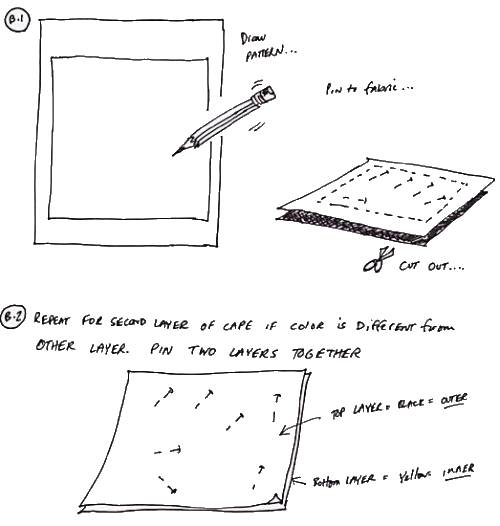
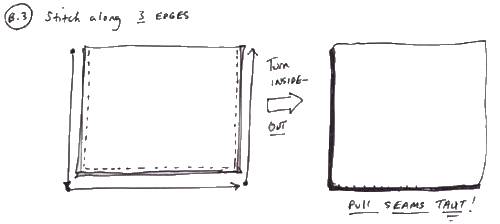
Now you are going to do the top stitch. One mistake alot of people
make with this is not pulling the seams taut enough and stitching too
far away from the edge of the fabric. This causes material to bunch up
near the edge and weighs the cape down. So make sure you stitch your top
stitch within a 1/8" of the cape's edge. Load the outer fabric color thread
(i.e. black) in the top thread spool of the machine, and load the other
color (i.e. yellow) in the bobbin thread compartment. Sew the top stitch
with the outer side of the cape facing you. This way, when you're done,
on one side of the cape only the black thread will show for example, and
on the other side, only the yellow thread will show.
If the tensions are screwed up on your sewing machine, some of the
wrong color thread may get pulled through to the other side, messing up
the look. So, to avoid this problem all together, I top-stitch with a
white thread, then color the stitch afterwards using fabric markers in
the desired shade.
Okay, so you've done your top-stitch (fig. B.4). Fold the cape around
the prospective figure (in this case, my custom Robin) to get an idea
of how much extra fabric you have. Take the figure away, and fold the
cape into threes, with the I-sides facing you. Do this by having the two
edge of the cape meet and then press toward the back of the cape. Pin
the shoulders in place (fig. B.5). Now sew the shoulders closed on an
angle out to the edge of the cape (fig. B.6) and trim away the excess.
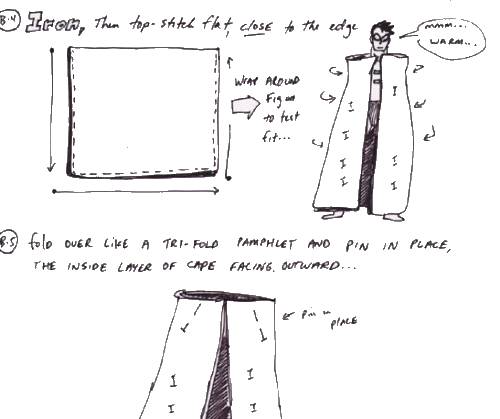
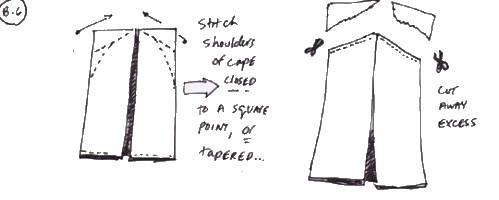
Note: You
can sew the shoulders so that the edges of the shoulder will be square
, giving your figure a very broad-shouldered look, or they can taper out
to be more graceful, such as what I did with my Dr. Strange.
Now fold down
the ragged edges of the collar of the cape and stitch the hem of them
(fig. B.7). Sew on a couple of snaps (fig. B.8) for your cape and you're
all done!
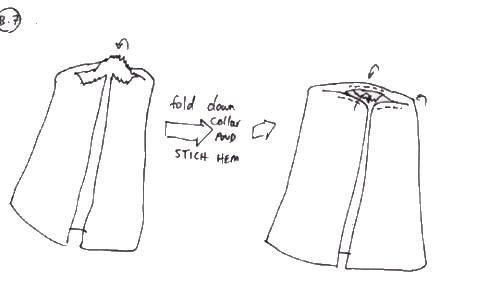

In either
case, the advantage of this cape, aside from dramatic appearance, is that
two layers of fabric are very heavy, but every crease you sew into the
cape gives a possible support system for posing the cape (unlike Charlee
Flatt, I don't like to sew miniature wires into the fabric edges. Just
a personal thing). The straight stitch at the shoulders serves as a sort
of cape infrastructure (for lack of a better term) that allows you to
pose the cape in many different ways, all of which give the figure that
little extra something special (attention Scott Metzger! You were asking
me how to make 2-layer capes less heavy and more posable-- here ya go!).
One
optional cape pattern I've also used (such as on my Modern Batman) is
the circular 2-layer cape. This is basically a semi-circle whose radius
is 8". See the pattern in (fig. B.9). This kind of cape is particularly
effective for characters with large billowing capes, i.e. Batman, Spectre,
Cloak (of cloak and dagger), Phantom Stranger..... All of the rest of
the instructions are the same. Good luck!
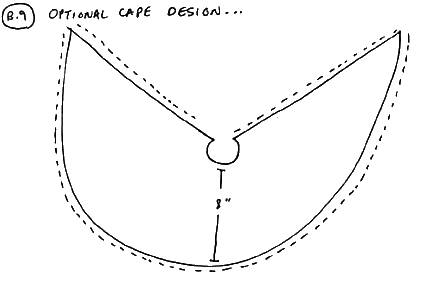
|



